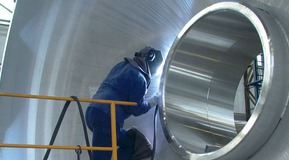

Did You Know?
There are many different types of potential hazards in welding and thermal cutting processes.
Everyone involved should be aware of what these hazards are.
Welding and cutting processes are safe, and the risks from the hazards can be reduced, if they are carried out correctly and with care.
Potential hazards need to be identified, measured where appropriate, and assessed, and remedial measures put in place wherever necessary.
Although Personal Protective Equipment, PPE, should not be issued as the primary method of reducing a hazard it should be issued to all personnel if beneficial. Employers and employees should be made fully aware of the dangers that can arise and take all reasonable care to ensure the health and safety of all.
Types of Hazards
The hazards encountered in welding and cutting may be sub-divided into groups as follows:
Electrical
Magnetic Fields
Compressed Gases
Fuel Gases
Inert Gases
Cryogenic Gases
Radiation
Heat, Flames, Fire and Explosion
Welding Fume and Gases
Noise
Material and Manual Handling
Confined Spaces
Thoriated Electodes
Solvents